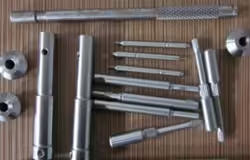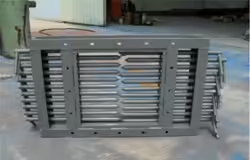
4140 Steel Composition: 10 Secrets Professionals Know
Table of Contents
Introduction
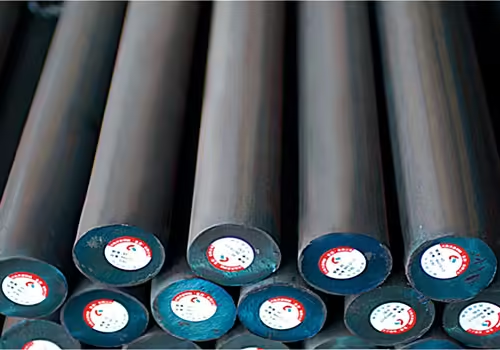
In the vast world of industrial materials, few alloy steels have earned the respect and recognition that 4140 steel has. Its popularity spans various industries, from aerospace to automotive, construction, and oil & gas. One major reason behind this widespread application lies in the unique blend of elements known as the 4140 steel composition.
Understanding the 4140 steel composition is critical for engineers, fabricators, designers, and metallurgists. This alloy steel is part of the AISI 41xx series and is classified as a chromium-molybdenum steel, often referred to simply as chromoly steel. What sets it apart from other types is how its elements synergize to provide a balance of strength, hardness, toughness, and wear resistance.
In this blog post, we will uncover ten secrets about 4140 steel composition that industry professionals rely on to make smart decisions. Whether you are sourcing materials, designing a component, or analyzing performance under stress, these insights will provide a strong foundation.
What Is 4140 Steel Composition?
Before diving into the secrets, it’s essential to define what exactly 4140 steel composition entails. As a low-alloy steel, its performance characteristics depend significantly on its elemental makeup. Here’s a general breakdown:
- Carbon (C): Around 0.38% to 0.43%
- Chromium (Cr): Approximately 0.80% to 1.10%
- Molybdenum (Mo): Roughly 0.15% to 0.25%
- Manganese (Mn): Around 0.75% to 1.00%
- Silicon (Si): Between 0.15% to 0.35%
- Iron (Fe): Balance
Each of these elements has a purpose. Carbon increases hardness and strength. Chromium enhances corrosion resistance. Molybdenum contributes to hardenability and strength at high temperatures. Manganese improves toughness, and silicon acts as a deoxidizer.
Why Professionals Prioritize 4140 Steel Composition
The steel’s properties are not accidental. Professionals often look at the exact 4140 steel composition to determine if it’s suitable for high-performance components. Because the chemical composition affects heat treatment response, machinability, tensile strength, and fatigue resistance, understanding this composition helps predict how the material will behave in real-world applications.
10 Secrets Professionals Know About 4140 Steel Composition
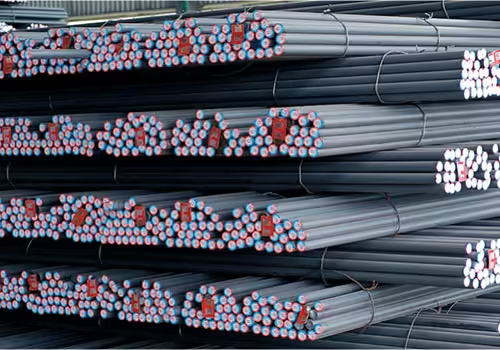
1. The Perfect Balance of Carbon Content
When discussing 4140 steel composition, one of the most crucial elements to highlight is its carbon content. Positioned around 0.38% to 0.43%, this level of carbon is notably higher than that of mild steels, which typically contain around 0.15% to 0.25% carbon. However, it still remains lower than the content found in many tool steels, which often exceed 0.60%.
This range isn’t just an arbitrary target; it represents a deliberate engineering decision aimed at achieving a fine equilibrium between ductility and hardness. Too much carbon can make steel brittle, while too little reduces its ability to be hardened. Professionals favor this specific 4140 steel composition because it provides a versatile material that can be heat-treated to significantly improve hardness and tensile strength, while still being workable with standard machining tools.
In practical terms, this means that parts made from 4140 steel—such as axles, spindles, and bolts—can be precision-machined without compromising durability. It’s a major advantage in manufacturing environments where both mechanical performance and process efficiency matter.
2. Chromium Isn’t Just for Corrosion Resistance
Chromium is often praised for its anti-corrosive properties, but in the case of 4140 steel composition, its value goes far beyond just rust prevention. With a content range of approximately 0.80% to 1.10%, chromium becomes a vital ingredient in enhancing the steel’s hardenability and wear resistance.
Hardenability refers to how deep into the steel a hardness effect from quenching can penetrate. A higher hardenability allows for thicker sections of steel to be uniformly hardened, which is essential for structural integrity in heavy-duty applications. Professionals working with large machine parts or load-bearing components often depend on this property when selecting 4140 steel for long-lasting performance.
Furthermore, chromium contributes significantly to abrasion resistance. Components like gears, bushings, and tool bodies endure repetitive motion and friction, leading to gradual wear. The chromium in 4140 steel helps mitigate this wear, reducing maintenance needs and extending the lifespan of critical parts. This level of durability makes 4140 a go-to choice in industries such as construction, transportation, and heavy equipment manufacturing.
3. Molybdenum Enhances High-Temperature Strength
Although present in small amounts—typically 0.15% to 0.25%—molybdenum plays an outsized role in the effectiveness of 4140 steel composition. This element is particularly valuable for its contribution to strength retention at elevated temperatures. In industries where steel components are exposed to extreme heat, such as aerospace, oil and gas, or power generation, this attribute is not just beneficial—it’s essential.
Molybdenum strengthens the ferrite phase of steel, which in turn boosts high-temperature creep strength and resistance to softening during tempering. It also synergizes with chromium to enhance hardenability. These combined effects allow 4140 steel to maintain both its structural integrity and mechanical properties even when subjected to thermal cycling or continuous heat exposure.
For professionals, this means they can rely on parts made from 4140 steel to perform in harsh conditions without suffering from deformation or fatigue. Whether it’s a turbine shaft, drilling component, or high-stress tooling, engineers can confidently design with 4140 knowing it will withstand heat-related challenges.
4. Toughness Without Brittleness
One of the greatest challenges in steel metallurgy is achieving a material that is both tough and strong. Often, increasing hardness comes at the expense of toughness, resulting in materials that can crack or shatter under impact. However, 4140 steel composition offers a unique solution to this dilemma.
Thanks to its carefully calibrated levels of carbon, manganese (0.75%–1.00%), and molybdenum, this alloy achieves a balanced microstructure. Manganese improves impact strength and hardenability, working in harmony with the other elements to boost the steel’s resistance to cracking. The result is a material that exhibits exceptional toughness—its ability to absorb energy and deform without fracturing—while still maintaining high levels of strength.
This makes 4140 steel ideal for dynamic applications where materials face high loads and shock forces. For example, in automotive or agricultural equipment, where components may be subject to sudden stress, having a steel that won’t fracture easily is a critical safety and performance advantage. Professionals favor 4140 steel because it helps reduce the risk of catastrophic failure in these high-load environments.
5. It Responds Exceptionally Well to Heat Treatment
Heat treatment is one of the most powerful tools engineers have to fine-tune a material’s mechanical properties. Fortunately, 4140 steel composition is particularly responsive to processes like quenching and tempering. This versatility allows for significant increases in tensile strength, yield strength, and resistance to impact and fatigue.
The alloy’s unique blend of elements plays a major role in this responsiveness. The carbon enables hardening, chromium ensures deeper hardness penetration, and molybdenum contributes to stability at elevated temperatures. The result is a steel that can be tailored to a broad spectrum of applications simply by adjusting the heat treatment parameters.
Professionals often choose 4140 when performance requirements are variable or unpredictable. For instance, if a part must endure both static loads and dynamic impacts, engineers can design it from 4140 steel and apply a heat treatment that maximizes the desired traits. The steel can be tempered to reduce brittleness after quenching, ensuring the final component meets both safety and functionality standards.
This flexibility also supports innovation. Designers working on cutting-edge applications—such as lightweight structural supports or high-efficiency drivetrain components—can experiment with heat treatment profiles to push the performance envelope without needing a completely different material.
Chemical Breakdown of 4140 Steel Composition
To better understand how these elements come together, here’s a typical chemical analysis of the 4140 steel composition:
| Element | Minimum (%) | Maximum (%) |
|---|---|---|
| Carbon (C) | 0.38 | 0.43 |
| Chromium (Cr) | 0.80 | 1.10 |
| Molybdenum(Mo) | 0.15 | 0.25 |
| Manganese (Mn) | 0.75 | 1.00 |
| Silicon (Si) | 0.15 | 0.35 |
| Sulfur (S) | – | 0.040 |
| Phosphorus(P) | – | 0.035 |
| Iron (Fe) | Balance | Balance |
Understanding this chart allows professionals to evaluate whether a given sample of steel meets the AISI 4140 specification. Variations, even within the acceptable range, can slightly alter performance characteristics.
More Secrets Behind 4140 Steel Composition
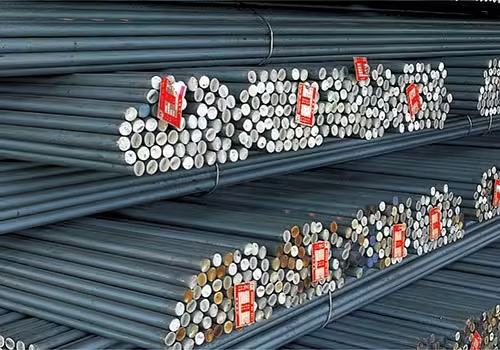
6. Machinability with the Right Setup
While not as free-machining as leaded steels, 4140 offers good machinability when annealed. Its composition allows it to be drilled, milled, and turned with proper tooling and coolants. Professionals often choose it when precision and surface finish are necessary.
7. Excellent Fatigue Strength
A significant reason engineers favor the 4140 steel composition is its high fatigue strength. Components like crankshafts, spindles, and axles made from this alloy tend to endure cyclic loading without early failure. This secret lies in its microstructure after heat treatment and the reinforcing role of alloying elements.
8. Weldability Is Possible But Requires Care
Welding 4140 isn’t as straightforward as mild steel, primarily because of its carbon content. Professionals preheat and post-heat weld areas to prevent cracking. Awareness of the 4140 steel composition ensures appropriate welding procedures.
9. It Has Wide Application Versatility
From hydraulic machinery to firearms and high-stress fasteners, the 4140 steel composition supports a wide array of use cases. Professionals utilize this material’s adaptable nature to design parts that require high strength-to-weight ratios.
10. Stable in Dynamic Environments
Dynamic applications involve changing loads, temperatures, and environments. The 4140 steel composition offers stability in such scenarios due to its microstructural integrity. Engineers often select it for parts that face unpredictable forces.
Conclusion
Understanding the 4140 steel composition is not just a matter of knowing percentages. It’s about appreciating how these elements come together to offer a powerful combination of mechanical properties. The secret behind its success lies in the subtle synergy of alloying elements and how professionals leverage them.
For professionals working in critical sectors, 4140 steel provides peace of mind. With proper treatment and machining, it offers reliability, performance, and longevity. Whether you’re designing a new component or analyzing failure modes, knowing the details of 4140 steel composition will elevate the quality of your work.
FAQ
What is the main alloying element in 4140 steel composition?
Chromium is one of the primary alloying elements, contributing to hardness, wear resistance, and corrosion resistance.
Can 4140 steel be welded?
Yes, but it requires preheating and post-weld heat treatment due to its carbon content to avoid cracking.
Is 4140 better than mild steel?
For strength, hardness, and fatigue resistance, yes. However, mild steel is easier to weld and machine.
What heat treatments work best for 4140?
Quenching and tempering are the most commonly used treatments. They significantly enhance mechanical properties.
Where is 4140 steel commonly used?
It is used in automotive parts, aerospace components, tool and die applications, oil & gas equipment, and industrial machinery.





